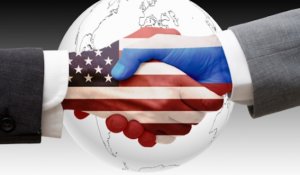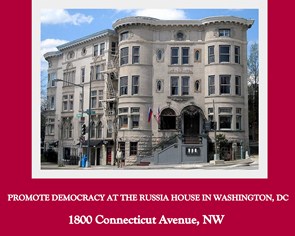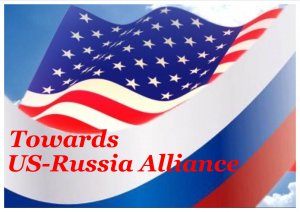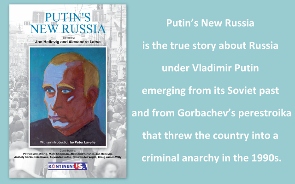Mark Adomanis
Contributor, "Forbes"
National Review published a rather overheated piece the other day that contained an entertaining line: "Russia has become the Soviet Union with a better suit”. The idea that Russia is fundamentally the same as the Soviet Union is a popular one, particularly on the political right where "Soviet” has for decades served as a synonym for "bad.” Barely a day goes by without someone bemoaning Putin’s "Soviet” character or the "neo-Soviet” policies that Russia pursues in its part of the world.
However this idea is deeply mistaken and extremely misleading, and can only be held by deliberately ignoring a huge amount of contradictory information. Indeed, by focusing on the minor and superficial similarities between present-day Russia and the USSR we ignore a great deal of what actually makes Russia unique.
I’m under no illusion that I will conclusively end peoples’ habit of substituting "the Soviet Union” for "the Russian Federation,” but I thought I would draw attention to some of the most glaring differences between the two. This is by no means an exhaustive list, but here are seven important reasons why the Russian Federation and the Soviet Union are not the same:
1) Parts of the Soviet Union are now members of NATO and the EU – it should be obvious that Russia has irrevocably lost all of its "satellite state” in central Europe, but Moscow’s loss of influence has been so severe that several countries that were constituent parts of the USSR are now members in good standing of the West. The Baltics might not have been the secret to Soviet power, but they were important industrial, technological, and military centers that are now completely and totally off-limits to Russia. Several other post-Soviet countries (such as Azerbaijan and Georgia) engage in security cooperation with the West of a sort that would have entirely unimaginable when they were mere union republics. That is to say that Russia is not the Soviet Union because parts of the actual Soviet Union are now in a Western military alliance.
2) The Russian federation is much more Russian than the Soviet Union - Westerners have a habit of substituting "Russian” and "Soviet,” as if they are one and the same. They weren’t. By the late 1980′s the Soviet Union’s population was a little more than 50% ethnically Russian. Before it fell apart, the pre-Soviet Russian empire had roughly the same percentage of ethnic Russians. The Russian Federation, on the other hand, is currently about 80% ethnically Russian. Minorities play an important (and growing!) role in Russia today, and make up a growing percentage of the population. Ethnic Russians, though, are simply far more culturally, religiously, linguistically, and numerically dominant in the Russian Federation than they were in the Soviet Union. That doesn’t magically solve all of Russia’s many problems with non-Russian minorities, but it does show that these conflicts are very different than those which characterized the USSR.
3) No single political party has a complete monopoly on power - The Communist Part of the Soviet Union was, for almost all of Soviet history, the only legal political party. All other organized political groupings and any other political activity that took place outside the confines of the party were automatically illegitimate. It’s not a surprise that the whole structure came crashing down shortly after Gorbachev removed the communist party’s political monopoly: the USSR was created, and deliberately designed to function, as a single-party state. United Russia’s influence, while significant, pales in comparison.
4) Russia is not a garrison state - The Soviet Union was one of the most thoroughly militarized societies in history and it consistently spent somewhere between 20 and 30% of its entire GDP on the armed forces. No one knows the actual level of Soviet defense spending, even the best estimates have margins of error of somewhere between 1 and 2% of GDP, but the entire Soviet economy was heavily influenced by military considerations. Manufacturers of civilian goods, for example, almost always had to have a "dual use” capability to manufacture military hardware, something which had a predictably deleterious impact on efficiency. The Russian Federation, according to SIPRI, spends somewhere between 4 and 5% of total GDP on defense. This is a bit high by international standards, but it’s nowhere near the level the Soviets reached and is actually lower than the current level of American military spending.
5) Russia has a convertible currency - This might seem rather dry and academic in comparison to the previous reasons I’ve outlined, but it actually goes to the heart of what distinguishes the Russian Federation from the Soviet Union. The USSR, of course, exercised extremely tight control over foreign trade and the use of foreign currencies. Unless you were a high-ranking party official, one could not simply walk down the street, pop into a currency exchange, and convert all of one’s rubles into dollars. It wasn’t allowed. So although the ruble had a headline exchange rate which made it appear strong, in practice there was a thriving black market in which the "real” value of the ruble was only a small fraction of its official one. That is no longer the case. The ruble can fluctuate in value, and in fact is currently experiencing pronounced weakness, but people are free to buy and sell rubles as they see fit.
6) Russia’s economy is (mostly) a free market - This was hinted at in #5, and is without a doubt the most fundamental distinction between the Soviet Union and the Russian Federation. Russia’s current economic system is highly imperfect, and suffers from weak legal institutions, corruption, an underdeveloped financial sector, and a host of other flaws. But what Russia does not suffer from is what the Soviet Union suffered from: massive economic distortion through state subsidies and outright fiat. The Soviet Union’s policy to contain inflation was not to raise interest rates or limit bank lending but to make inflation illegal. Inflation was banned and prices on a host of important goods were frozen (consumers, of course, paid the increased cost through ever-more-pervasive shortages). The Soviet treatment of unemployment was similar. The Soviet Union sought to lower unemployment not through tax credits or through loose monetary policy but by making unemployment a crime and forcing enterprises to boost their payrolls. Stories abound of Soviet grocery stores that had four different ticketing systems and ten different cashiers. This sort of inefficiency wasn’t some mysterious manifestation of eastern barbarism, it was an entirely predictable result of Soviet economic policy. Russia is by no means a Randian paradise, but the level of direct state intervention in the economy is simply not comparable. Prices on consumer goods are liberalized, the labor market is liberalized, and huge chunks of the economy operate on essentially free market principles.
7) Russia has open borders - The "iron curtain” was not just a poetic contrivance, it was very real, and incredibly violent, way of limiting the free movement of people. The curtain was necessary because the communist systems could simply not offer their populations the same standards of living that prevailed in the West. Given a free choice, people in the East would move West in massive numbers, something which would not simply humiliate the communist governments of Eastern Europe but would put their very survival at risk. This was actually happening in East Germany when the Berlin wall was first built, and it would have become an increasingly serious problem as time went on. Hundreds if not thousands of people died trying to make their way out of the communist bloc into the West, while tens of thousands of other managed to somehow make it past barbed wire, moats, guard dogs, and snipers. Trying to leave Russia today involves nothing of the kind. Each year thousands of Russian citizens exit the country without any special drama: they simply get a visa, get on a plane, and leave. The Soviets placed extremely strict limitations on foreign travel, understanding well that open borders would make the entire system untenable. A Russia with open borders isn’t perfect, but it is almost impossible to exaggerate how different it is from the Soviet Union.
The fact that Russia differs from the Soviet Union does not, of course, mean that it is good. Just as Soviet is not a synonym for bad, "not Soviet” is not a synonym for good. As should be clear, though, the Russia Federation and the Soviet Union have some fundamental differences. From its position in the international order, to the strength of its armed forces, to its migration policies, to the nature of its political and economic systems Russia is not the USSR. Anyone who suggests otherwise either doesn’t know much about the Soviet Union or has a political axe to grind.



_jpg/250px-ElbeDay1945_(NARA_ww2-121).jpg)





